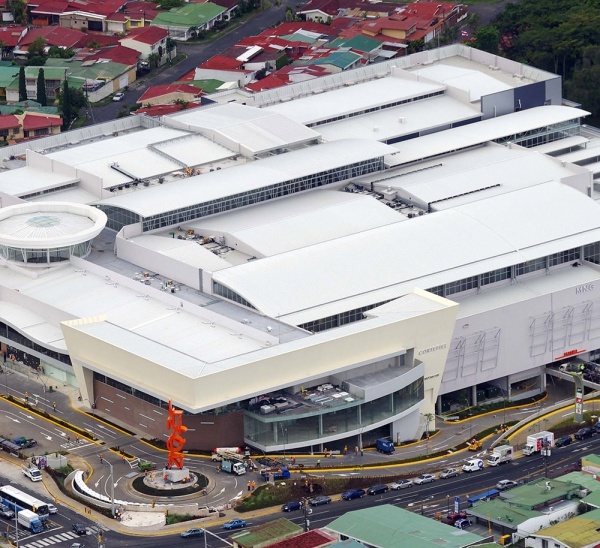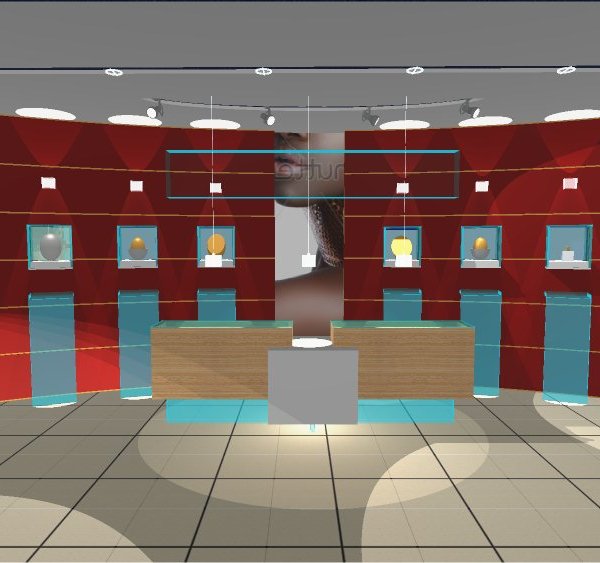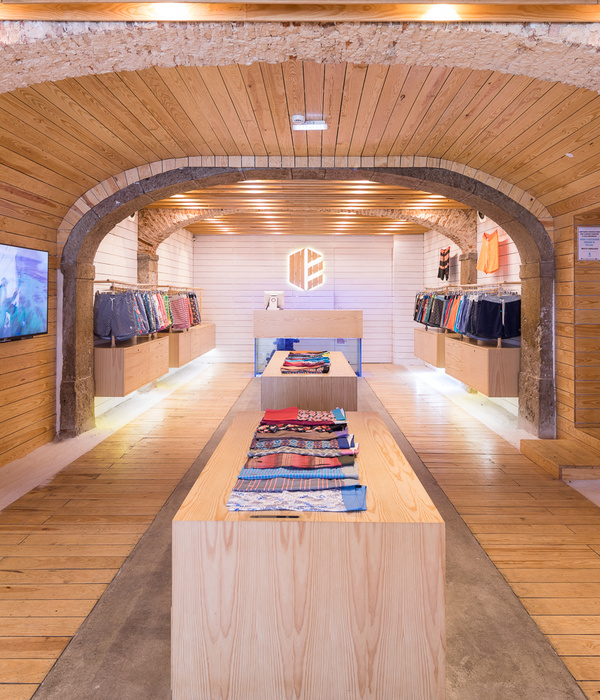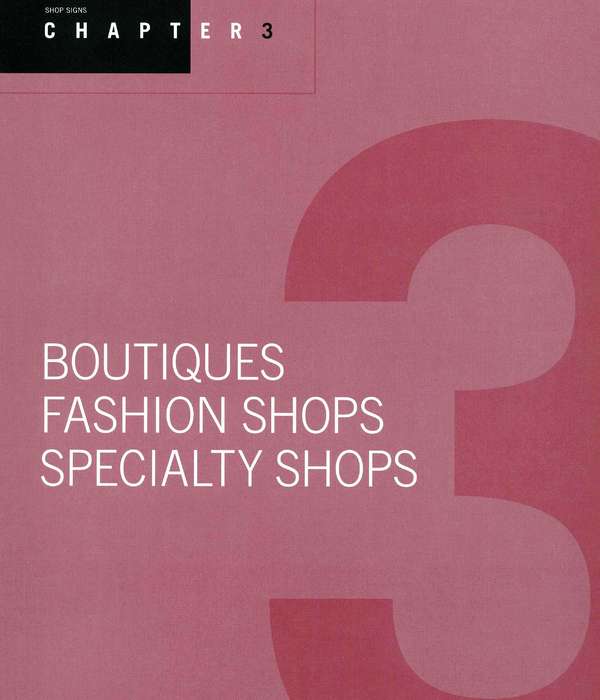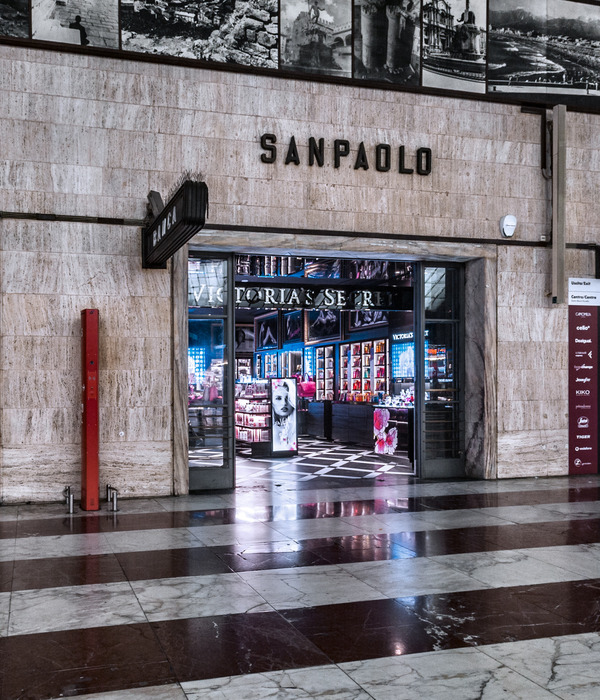“剧场”商店是日本东京繁华时尚区青山(Aoyama)的三层建筑的全新改造项目。建筑的一层和二层是英国时装店,三层是婚礼及活动策划公司的大厅。设计团队面临的挑战是通过重新考虑实体店的现有功能,设想后疫情商店的新空间模式。全球新冠疫情带来的巨大影响之一就是数字化进程显著加快,持续的快速发展预示着未来通过虚拟商店进行购物的体验将更加普遍。针对这种社会状况,设计团队提议重新设想实体店的空间功能,使其从传统的购物场所转变为了解和体验品牌文化的场所。如果购买行为可以虚拟完成,那么实体店的最终目的应该是提升潜在客户的兴趣,从而将他们与产品销售联系起来。
The Playhouse is a full renovation project of 3 stories high building locates in a busy fashion district of Tokyo, Aoyama in Japan. The building accommodates a British fashion store on the ground and first level, and a hall for a wedding and event planning company on the second level. Our design team was challenged to envision a new spatial model of Post-COVID store by reconsidering the existing function of physical shops. One of the impact caused by the global coronavirus pandemic is remarkable acceleration of digitalization. This ongoing rapid movement indicates the future in which the shopping experience will be greatly more common to be done through virtual stores. In response to this social situation, the team proposed to reimagine the spatial function of the physical store from a conventional concept of a place to purchase goods into a place to learn, discover and experience the cultures related to the brands of products. If the act of purchase can be done virtually, the ultimate purpose of a physical store should be to elevate potential customers’ interest which will connect them to product sales.
▼项目外立面,external facade © Kenji Seo
▼移动的帘幕,the movable curtain © Kenji Seo
项目初期,设计团队将整栋建筑设想成另一种形式的剧场,引入可变的建筑元素,使这里可以容纳各种活动。设计团队将入口门厅设计成带有可移动帘幕的高空间,为演讲和音乐会等活动创造出临时舞台,最多可容纳50人。
The project is started by considering the whole building as an alternative form of theatre by designing transformable architectural elements that allow a variety of events to take place throughout the building. The entrance atrium is designed as a fly tower with a movable curtain that creates a temporary stage for events such as talks and concerts, accommodating up to 50 people.
▼帘幕内部,inside view of the curtain © Kenji Seo
▼高挑的入口门厅,tall entrance atrium © Kenji Seo
一层商店区域设有多个可旋转的隔板,为举办快闪市集、时装秀或工作坊等活动提供灵活的空间。每面隔板分配给不同的品牌,间隔数月就会更换,在整个楼层形成一群小型快闪店。二层中央的楼梯将客人引至三层大厅,并在楼梯外围形成商店常驻品牌的产品的展示空间。三层大厅设有可以改变空间大小的帷幔,以便举办不同规模和内容的活动。
▼轴测与一层平面,axon drawings and gound floor plan © HARUKI OKU DESIGN + PAN- PROJECT
The shop area on the ground level is composed with multiple rotatable walls, providing flexible space for hosting various activities like pop-up market, fashion show or workshops. Each wall is allocated to a different brand that regularly changes in every few months, creating a collection of small pop-up stores across the floor. The foyer placed in the center of the first floor leading guests to the main hall on the second level while shaping a display space for the shop’s permanent brands’ products on its periphery. The hall on the second floor is composed with various textiles that allows the space to fluctuate its size in order to host events of various scales and contents.
▼可旋转的隔板,rotatable walls © Kenji Seo
▼一群小型快闪店,the collection of small pop-up stores © Kenji Seo
▼从楼梯回望入口,view back to the entrance from the staircase © Kenji Seo
▼二层中央的楼梯,the staircase placed in the center of the first floor © Kenji Seo
▼常驻品牌的产品的展示空间,the display space for the shop’s permanent brands’ products © Kenji Seo
▼不同角度的隔板,different views to the walls © Kenji Seo
该项目没有将整个楼层用于商品展示,而是使文化、活动空间与销售空间并存,挑战了商店的传统空间模式。该项目旨在探索越来越虚拟化的后疫情社会中商店空间的可能性。
The Playhouse challenged the conventional spatial model of shops by creating rooms for culture and diverse activities to co-exist whilst the sales space rather than dedicate entire floor for displaying products. The project aimed to explore one of the possible future of shop space for Post-COVID society where virtualization of our living lives become more established.
▼使用场景,usage scenarios © Kenji Seo
▼细部,details © Kenji Seo
▼一层平面图,ground floor plan © HARUKI OKU DESIGN + PAN- PROJECT
▼二层平面图,first floor plan © HARUKI OKU DESIGN + PAN- PROJECT
▼三层平面图,second floor plan © HARUKI OKU DESIGN + PAN- PROJECT
{{item.text_origin}}



